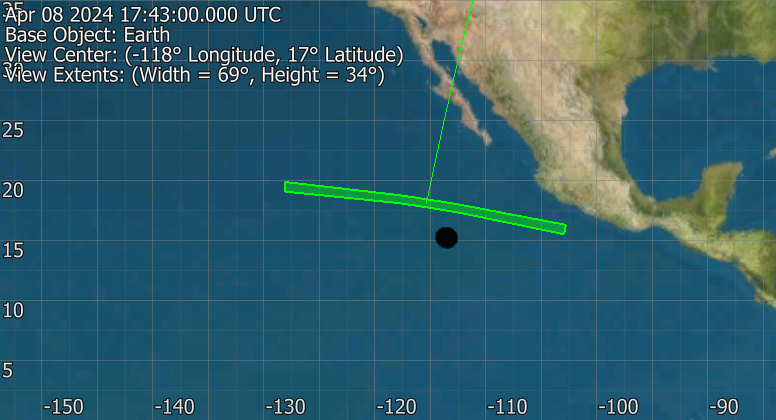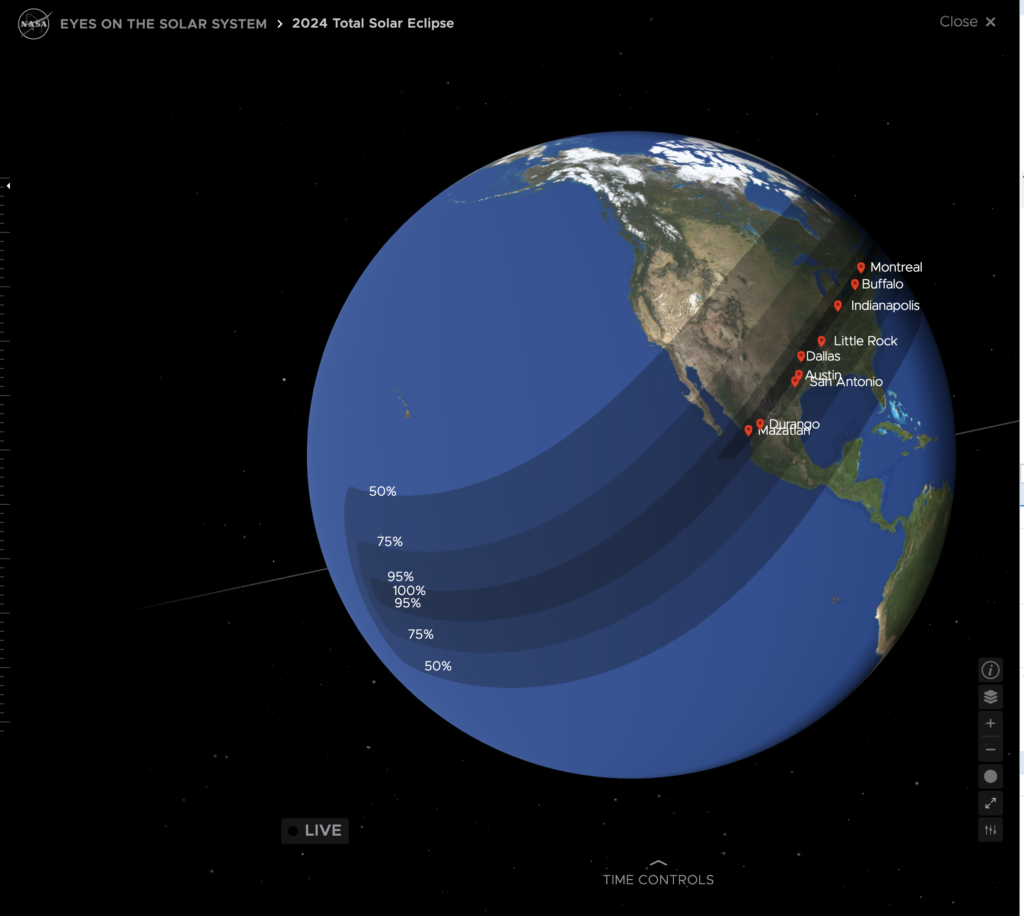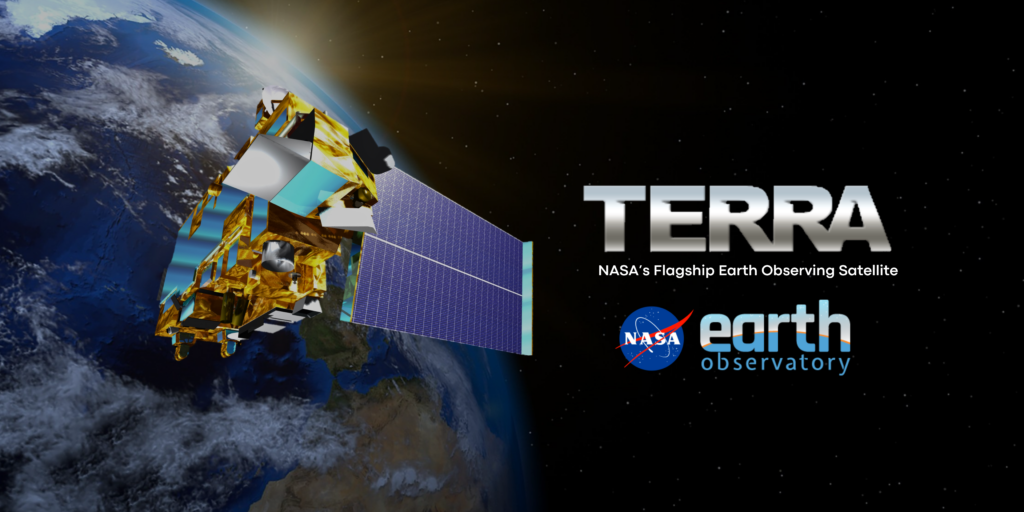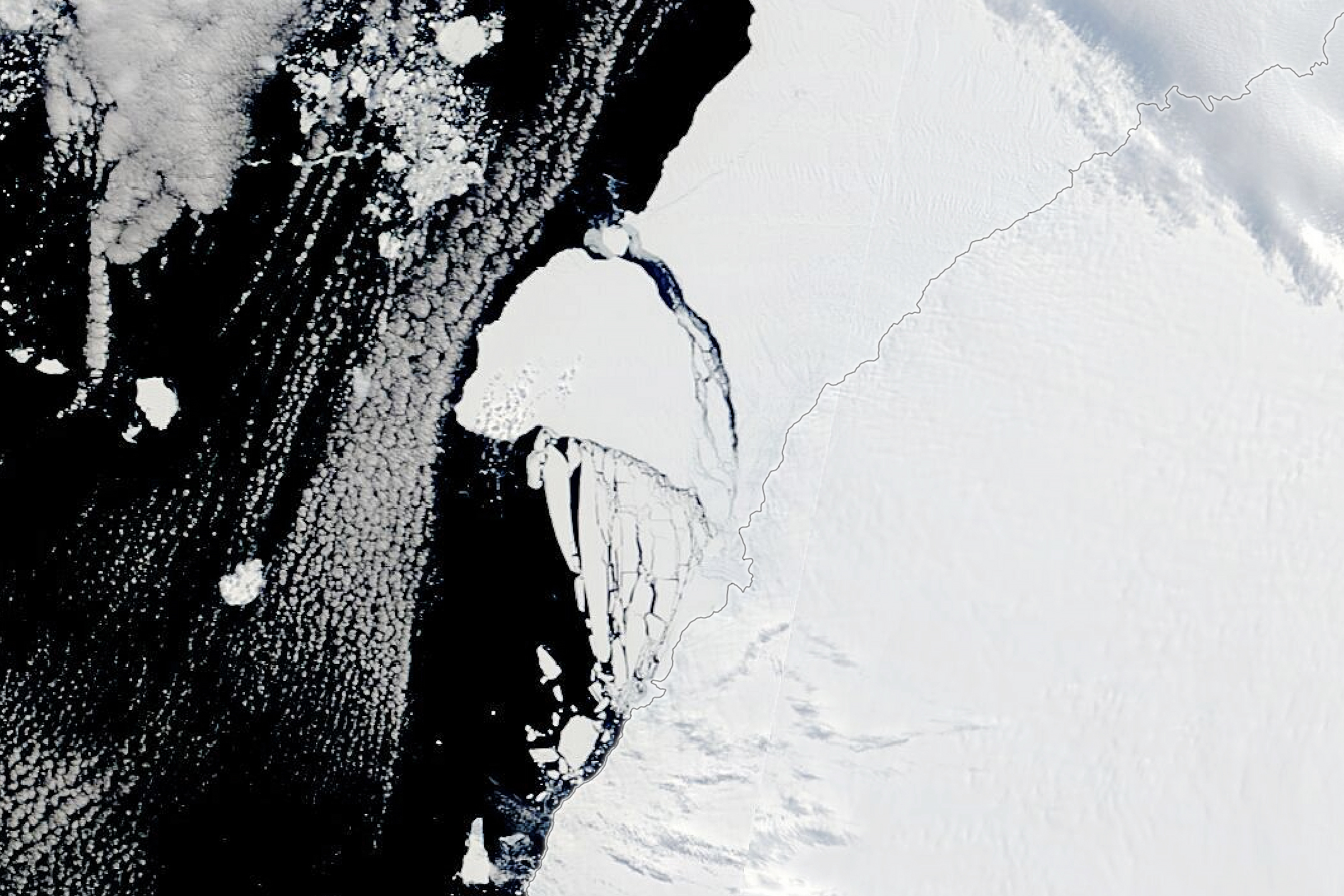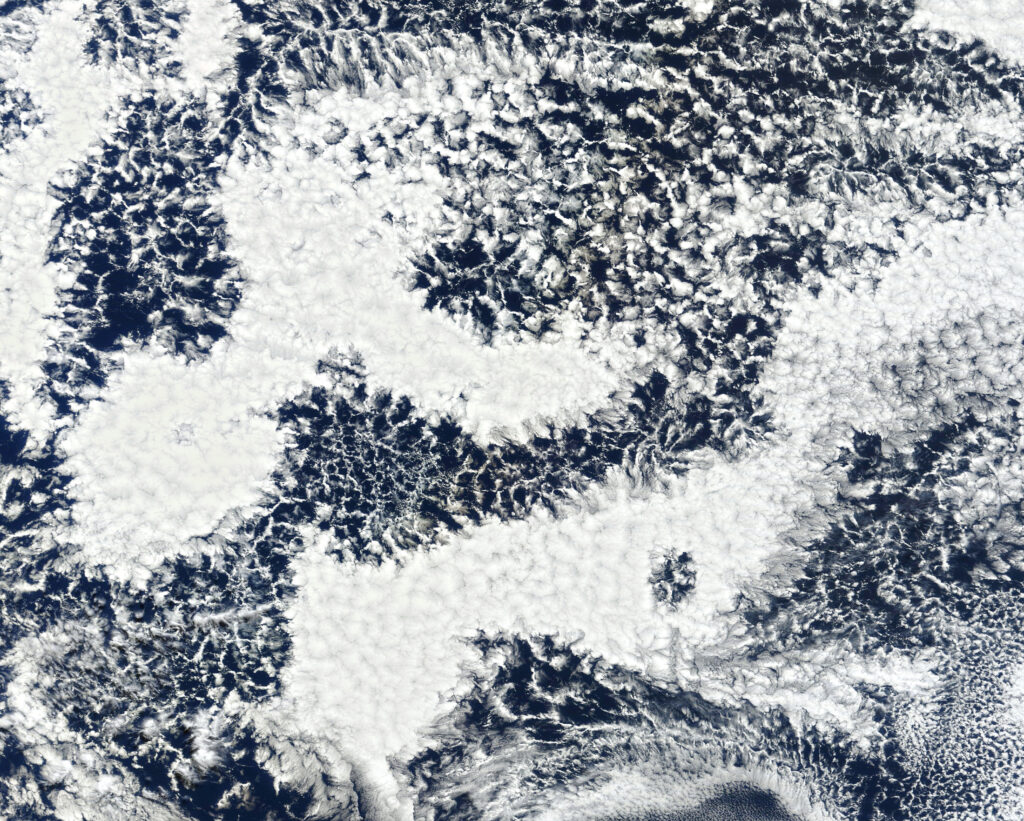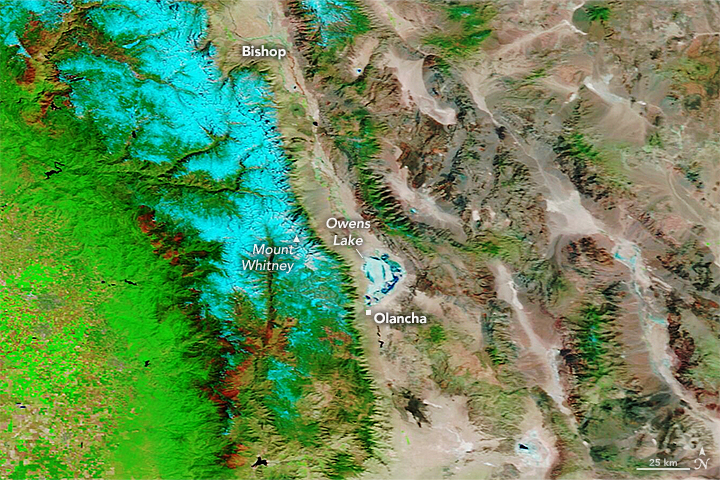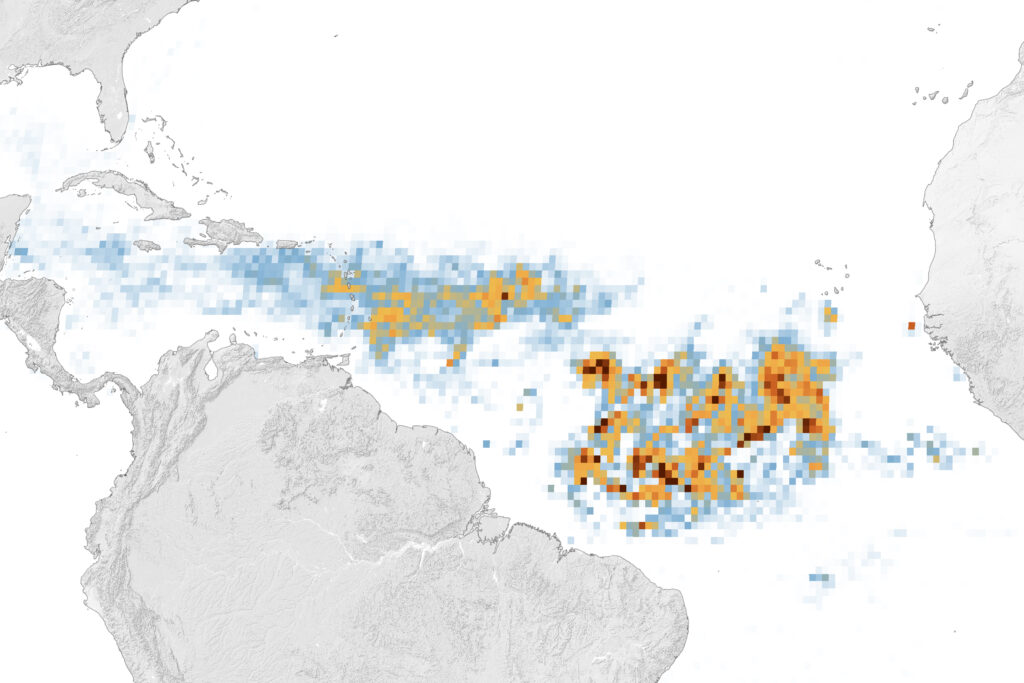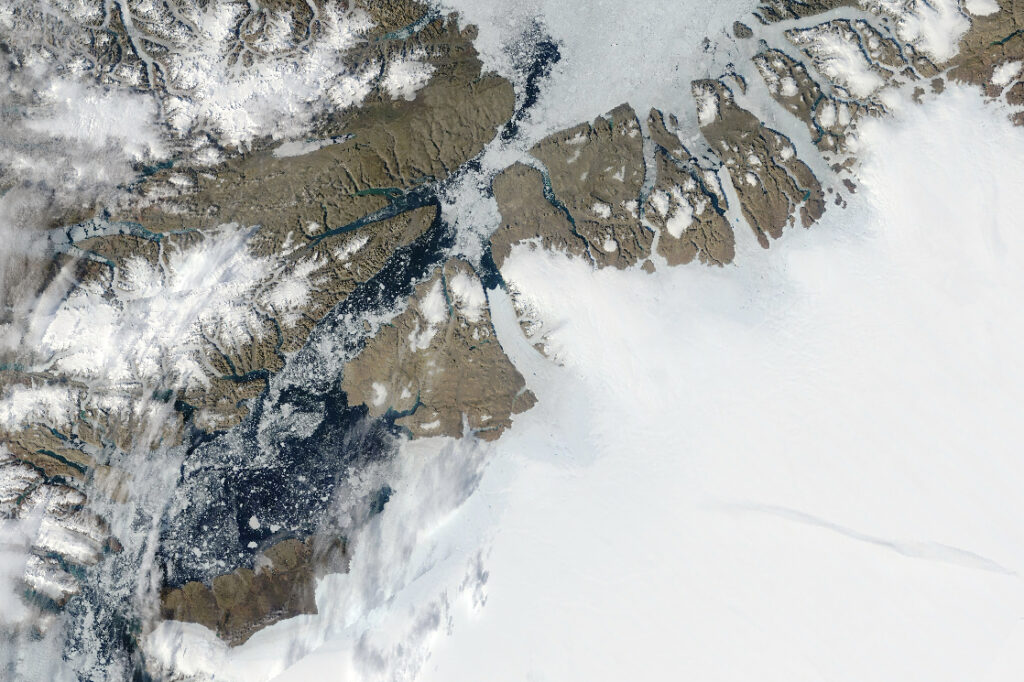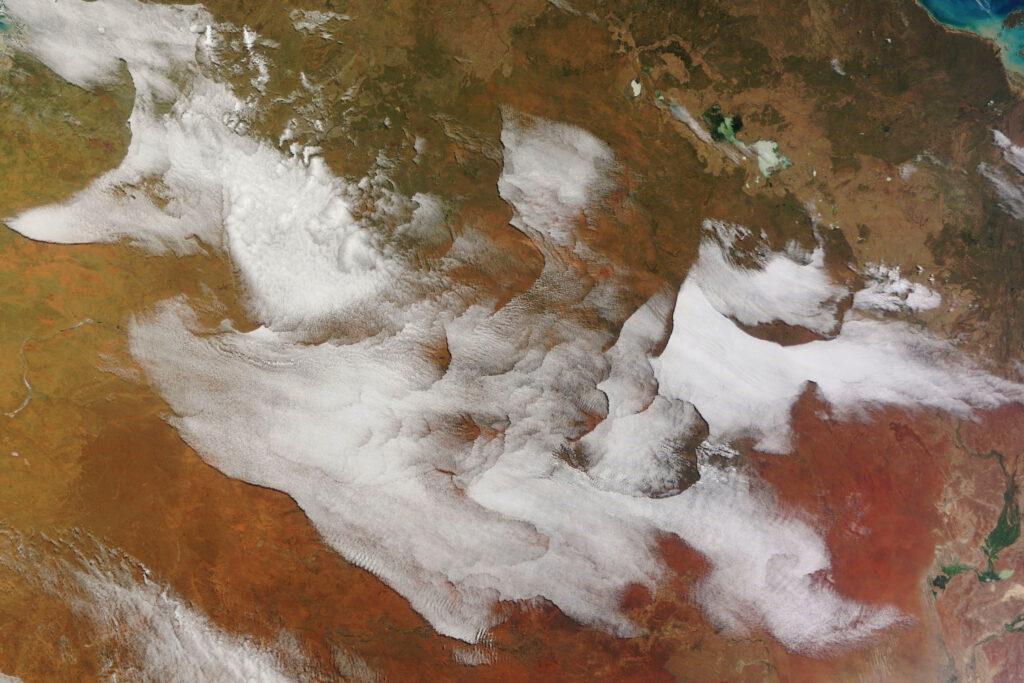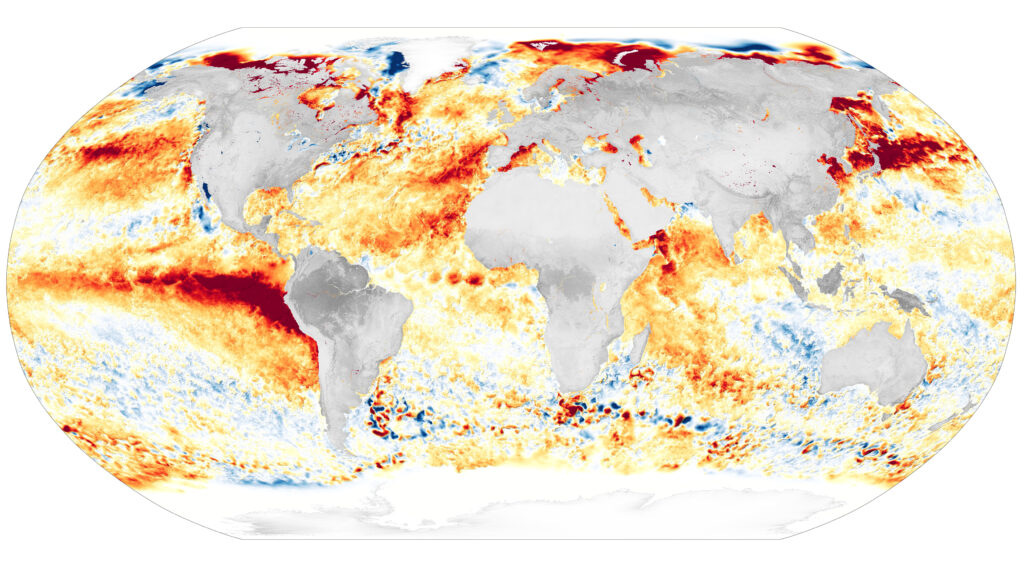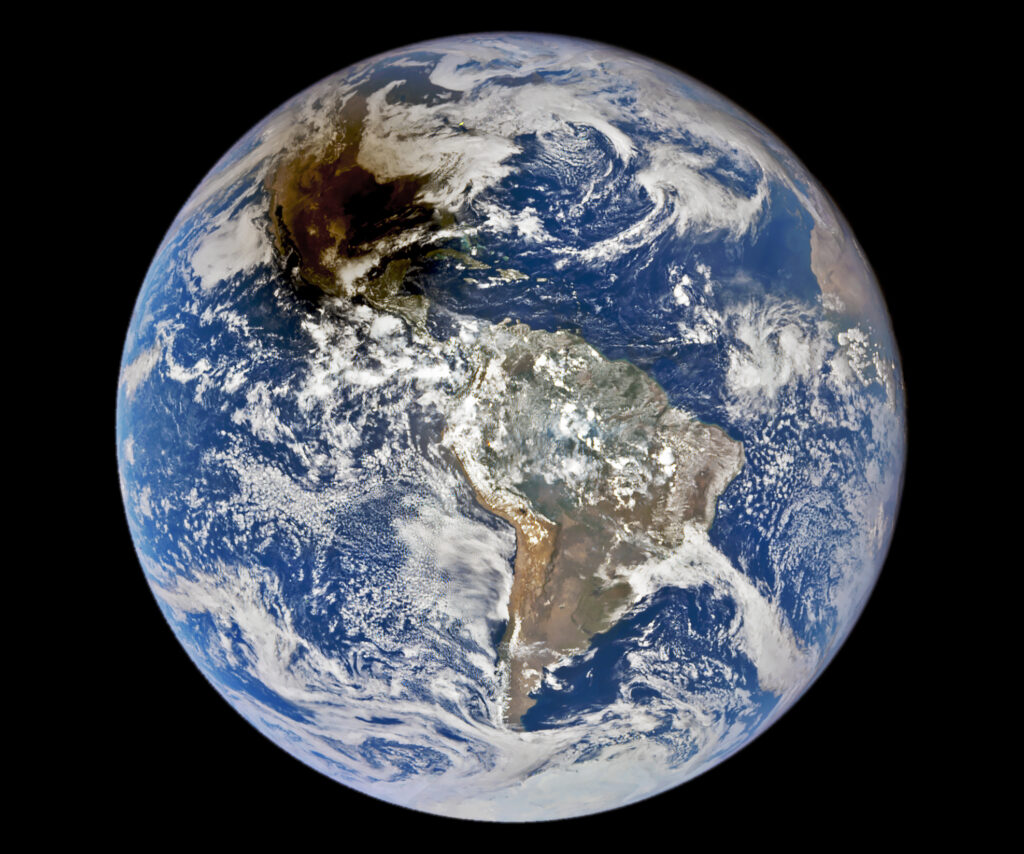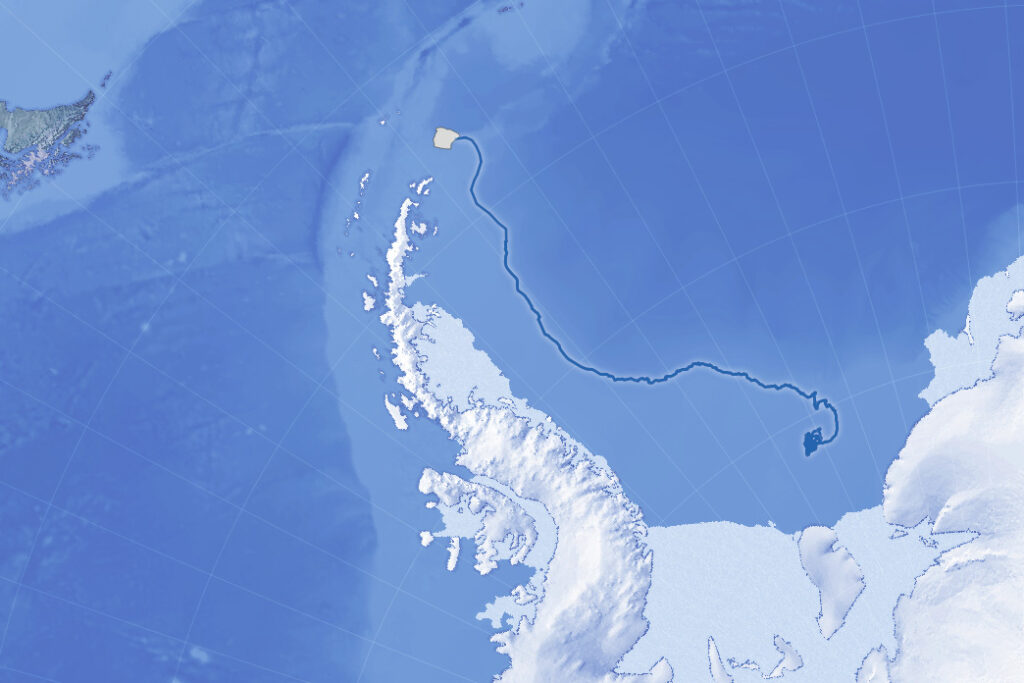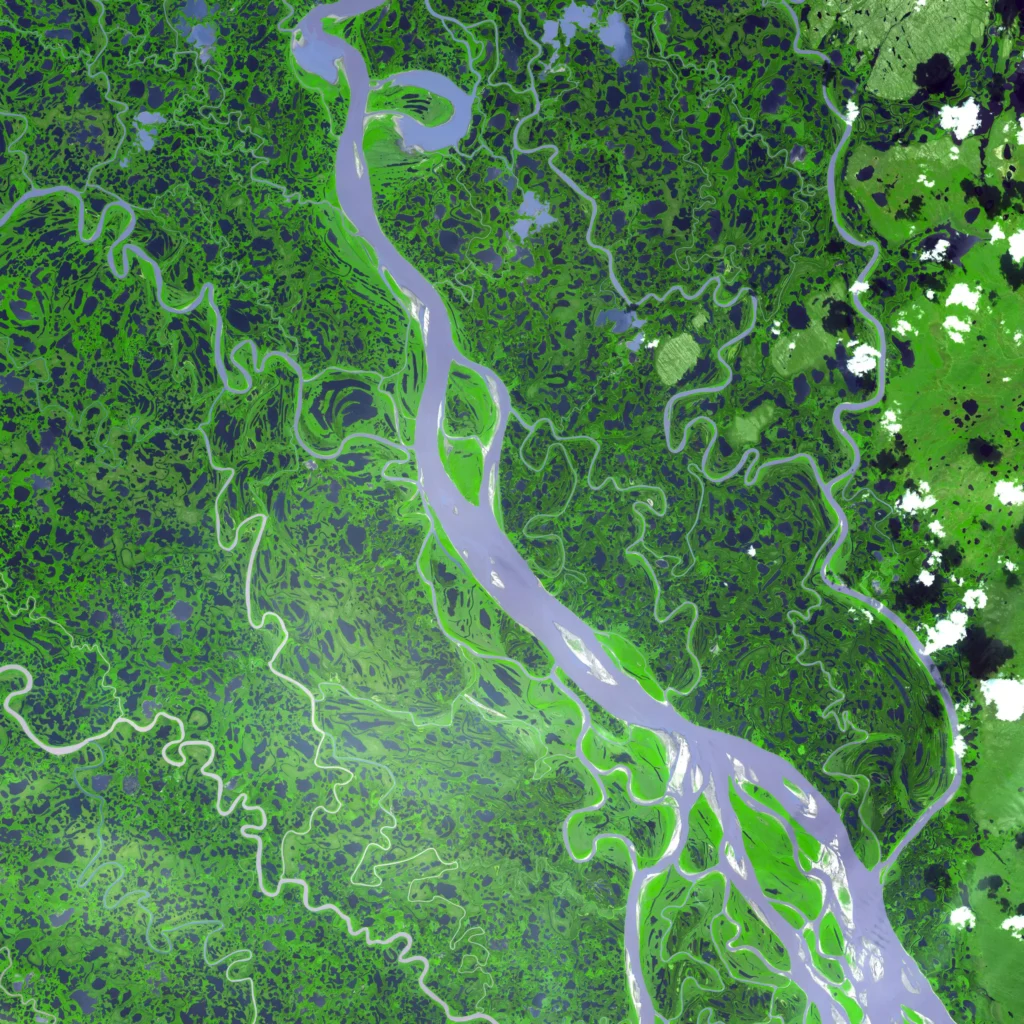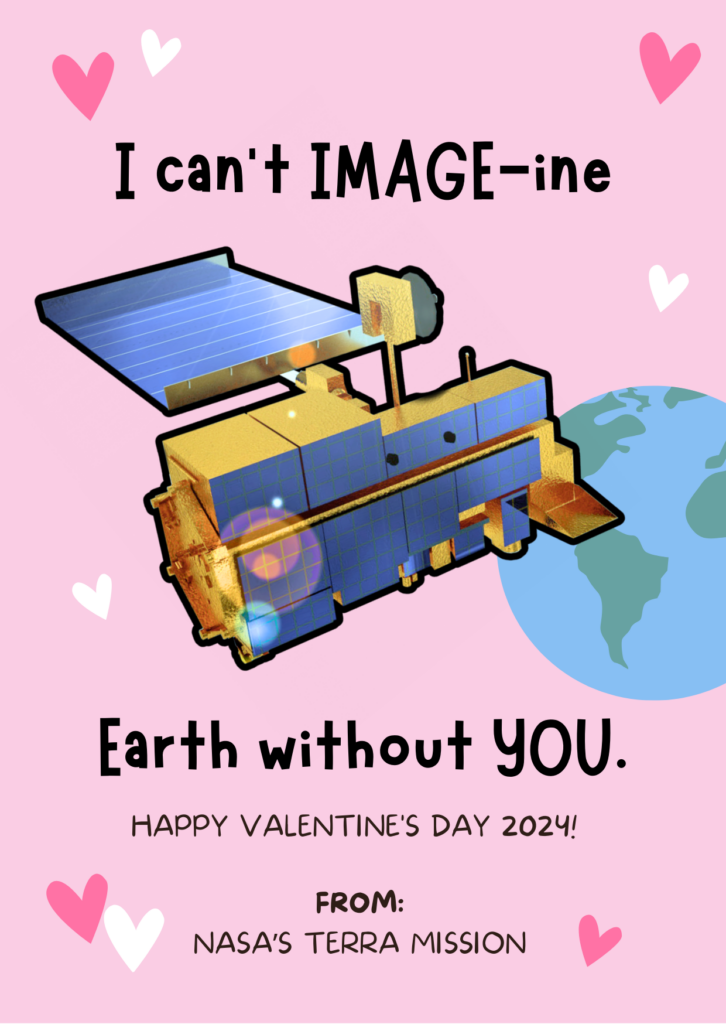2024 was a busy year for the Terra mission, as we handled platform battery charging changes, performed a yaw maneuver, and celebrated Terra’s 25th Anniversary– all while continuing to support the uninterrupted collection of daily Earth observations!
Let’s take a moment to look back at the top-shared monthly Terra stories on the social media platform X. Many of these stories were shared from the NASA Earth account and include posts from Earth Observatory that feature the Terra mission!
Click the linked month in each banner to jump down to a brief image summary that also includes a thumbnail linked to the original X post, as well as a link to the associated article from Earth Observatory or another resource.
Click the thumbnail on the left to view the original post on X, or the linked title of the informational resource above the summary on the right.

January 2024: “Foggy Nile“
Giving the illusion of a long-stemmed blooming white flower, this Terra image of fog over the Nile Delta was captured on January 7, 2024.

February 2024: “Ice Swirls Along the Labrador Coast“
Have you ever wondered how Terra imagery compares to photographs taken by actual astronauts on board the International Space Station? Wonder no more! Check out this side-by-side comparison of swirling ice in the Labrador Sea on February 3, 2024.

March 2024: “Smoke Blankets Venezuela“
In March 2024, hot and dry conditions — fueled by a shift in El Niño circulation patters — drove a record-breaking number of wildfires in Venezuela. Smoke from these fires was captured by Terra on March 26, 2024.

April 2024: “Join NASA in Celebrating Earth Day 2024 by Sharing a #GlobalSelfie“
For Earth Day, NASA’s Goddard Space Flight Center challenged social media users to share a beautiful image of Earth using the #GlobalSelfie hashtag, with Terra imagery front and center as an example.

May 2024: “Sierra Snowpack Springs Back“
While Venezuela experienced drought in early 2024, the Western U.S. had an early May snowstorm resulting in 2 feet of snow, a source of critical water during the summer months. This dramatic change in snowpack was captured by Terra imagery from May 5, 2024.

June 2024: Global Vegetation Index Animation
In June, the NASA History Office showcased 19 years of annual vegetation imagery from Terra MODIS in a 45 second animation, while highlighting Terra’s quarter-of-a-century data record.

July 2024: NASA DEVELOP Website Image Competition
In July, NASA’s DEVELOP program — a part of the Applied Science group — highlighted several graphics from past and present projects, with the goal of selecting one, via public voting, for use on the program’s website. One such graphic was developed from an East Coast project that combined Terra air quality data with vertical data from the CALIPSO satellite to better understand pollutant distribution throughout the column. And while the image didn’t win overall, it was voted 2nd place in this round!

August 2024: NSIDC MODIS Data Products
Did you know that NASA has a data center dedicated entirely to snow and ice data products? In August, the National Snow and Ice Data Center (NSIDC) highlighted false-color imagery of Earth’s cryosphere derived from Terra’s MODIS data.

September 2024: “A Deluge for the Sahara“
On September 10, 2024, parts of the dusty brown Sahara Desert turned blue, as dried lake beds filled up with water from an intense extratropical cyclone-driven rainfall event.

October 2024: Solar Powered Terra
Terra’s amazing solar-power system — generating energy to run the platform for over 25 years — was highlighted by the NASA Earth account in October. Learn more about Terra’s solar panels by visiting the article linked above.

November 2024: New Terra Data Product for Climate Modeling
In November, the NASA Earthdata program highlighted a new Terra-derived, snow-free global data product, for use in climate models. To find out more about this product (or download your own copy — it’s free! like all NASA data), visit the link above.

December 2024: “25 Terra-ific years!“
2024 wouldn’t be complete without a post from the NASA History Office, commemorating Terra’s 25th Launch Anniversary! We’ll be giving a more detailed summary of all the celebration events in a later post, but for a sneak-peak from the Terra 25th Anniversary event held December 18 at the Goddard Space Flight Center’s Visitor Center, visit the Terra webpage linked above!




